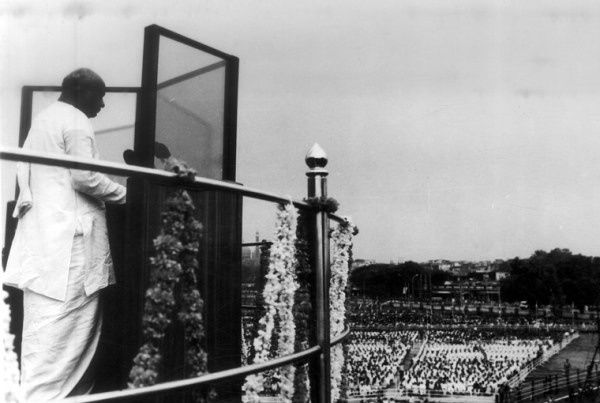Uttarakhand: How the state was born, and why it still matters
The first major flashpoint occurred in 1938, with Jawaharlal Nehru favouring the cause at the Congress's special session in 1938. This was the first public acknowledgment that the lifestyles, customs and cultures of the mountains were different from those of the plains.
 Supporters of the 'Uttarakhand Separation Movement' demonstrate in Delhi demanding a separate state. (Express archive)
Supporters of the 'Uttarakhand Separation Movement' demonstrate in Delhi demanding a separate state. (Express archive) The Uttarakhand Cabinet Monday approved a 10 per cent horizontal reservation in government jobs for Rajya Andolankaris or people who participated in the Uttarakhand separate statehood agitation. The demand had been gaining momentum over the last 11 years among families of those killed during the movement and demonstrators who were injured or jailed at the time.
All major parties in Uttarakhand have attempted to take credit for the state’s formation. Ahead of the 2022 Assembly polls, the BJP used the “Atal ji ne banaya, Modiji sanwarenge (former Prime Minister Atal Bihari Vajpayee created Uttarakhand, and now PM Narendra Modi will nurture it)” slogan to highlight the point that the state was formed during Vajpayee’s tenure. A year before, the BJP government led by Pushkar Singh Dhami had hiked the Andolankari pension for those who were jailed or injured while participating in the agitation.
How Uttarakhand was formed
The state was carved out of the northern hilly regions of Uttar Pradesh on November 9, 2000, after a long socio-political struggle. The first demands for special rights and concessions for the region and its people were believed to have been raised as far back as 1815 after the East India Company’s capture of the Kumaon hills.
Small movements and public discussions demanding autonomy and special rights for the Garhwal and Kumaon regions of the Himalayas along with the Dehradun valley – which were governed under the administrative unit of the United Provinces (UP) in colonial times – continued thereon.
The first major flashpoint occurred in 1938, with Jawaharlal Nehru favouring the cause at the Congress’s special session in 1938. This was the first public acknowledgment that the lifestyles, customs and cultures of the mountains were different from those of the plains. Uttarakhand, however, continued to be part of Uttar Pradesh in post-Independence India.
The movement gained weight in July 1979 with the formation of the Uttarakhand Kranti Dal, whose objective was a separate hill state.
However, it were the 1990s which would become a decisive decade for the movement. The BJP began supporting the movement in 1991, and formed the Uttaranchal Sanyukt Sangharsh Samiti within the party, despite having criticised it as being divisive earlier.
 Samajwadi party chief Mulayam Singh Yadav. (Express Archive)
Samajwadi party chief Mulayam Singh Yadav. (Express Archive)
The Samajwadi Party (SP), which predominantly ruled UP through the 90s, had varied stands on the demand. In his first term as Chief Minister (1989-’91), Mulayam Singh Yadav was completely opposed to the formation of a new state. During his second term (1993-’95), his government passed a resolution in favor of the cause and even constituted a high-level ministerial committee to study the issue.
The movement intensified in 1994. That year, Mulayam announced a plan to reserve 27 per cent of all government jobs and educational seats for Other Backward Classes (OBCs), who were 37 percent of the state’s population at the time. Along with existing reservations to the SC and ST community, the move brought total reservation provisions in UP to around 50 per cent.
 Women shouting slogan against Mulayam Singh Yadav at Pauri. (Express archive)
Women shouting slogan against Mulayam Singh Yadav at Pauri. (Express archive)
Subsequently, the hill areas, which were dominated by the upper castes, saw an anti-caste agitation alongside the demand for a separate state. Violent clashes broke out between protesters and state authorities, including the infamous golikand or firings in Khatima and Mussoorie. In the Rampur Tiraha case of October 1994, hundreds of activists were stopped by police in Muzaffarnagar while they were on their way to stage a protest in Delhi. The police fired and six people died, while several others were left injured.
 Then Prime Minister, HD Deve Gowda addressing the nation from the ramparts of the Red Fort in Delhi on the occasion of 50th Independence Day on August 15, 1996. (Express archive)
Then Prime Minister, HD Deve Gowda addressing the nation from the ramparts of the Red Fort in Delhi on the occasion of 50th Independence Day on August 15, 1996. (Express archive)
Two years later, then Prime Minister H D Deve Gowda announced the formation of ‘Uttaranchal (renamed as Uttarakhand in 2007)’ on Independence Day. In 1998, the Atal Bihari Vajpayee-led government sent the Uttar Pradesh reorganisation Bill to the UP government, following which the legislation was passed with 26 amendments suggested by the state Assembly.
The politics
The movement has shaped the region’s political equations and continues to do so.
Prominent Uttarakhand-based historian Shekhar Pathak had earlier told The Indian Express that the Communist Party of India (CPI) was the first post-Independence party to have supported the statehood demand. In 1967, the party even prepared a document containing a proposed three-tier system of governance in Uttar Pradesh but the move failed to have any political impact in that year’s elections.
The UKD is said to have brought the statehood demand to every door in the region. However, unlike other similar movements in the country where a regional political party emerged as the voice of the people (like Jharkhand Mukti Morcha and Telangana Rashtra Samithi) demanding a separate state, the UKD remained dormant.
The BJP’s support for the demands translated into a strong presence for the party in the hill state in the ’90s, bolstered by the Ram Mandir agitation and the decline of the traditionally dominant Congress.
- 01
- 02
- 03
- 04
- 05































